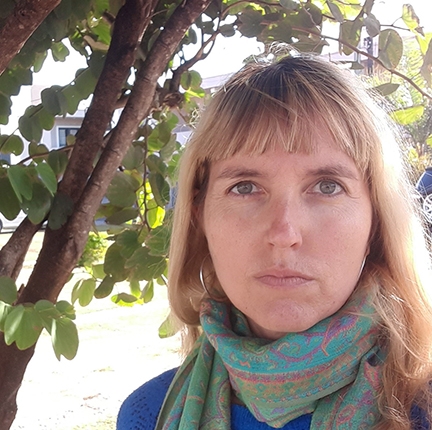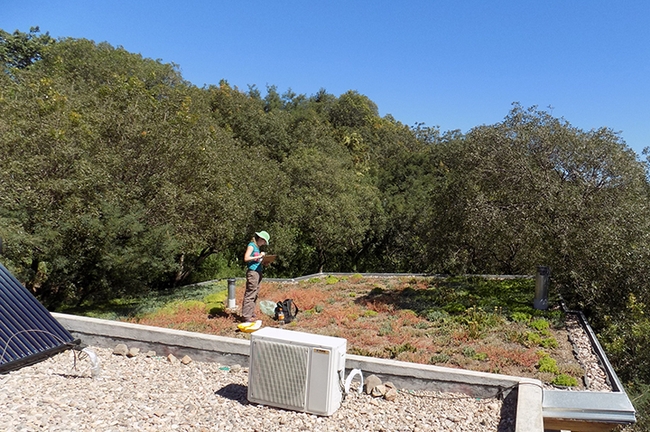
Ecologist and research scientist Maria Silvina Fenoglio of Argentina will present a virtual seminar, hosted by the UC Davis Department of Entomology and Nematology, on "Do Green Roofs Benefit Urban Arthropod Communities? Evidence from a South American City," at 4:10 p.m., Wednesday, Oct. 6.
"Green roofs, beyond offering numerous environmental benefits, could mitigate the negative effects of urbanization on arthropods. However, the characteristics of green roofs that could favor arthropod biodiversity and ecological functioning are poorly known, especially for South American countries," Fenoglio says in her abstract. "In this talk, I will present the main results of our investigations in relation to these aspects."
UC Davis urban landscape entomologist Emily Meineke of the UC Davis Department of Entomology and Nematology is hosting the presentation. "Dr. Fenoglio's work is foundational to our current understanding of how insects respond to urbanization," Meineke said. "While the hypotheses she tests are diverse, they focus around how various aspects of land management shape beneficial insect communities, a topic that is critical for conservation today. I could not be more excited that she agreed to present her work to the department."
Since 2018 the ecologist has served as a National Geographic explorer. She works on projects related to urban ecology and the ecology of insect communities. "I have a particular interest in the study of urban green spaces (ie. green roofs, urban gardens) as refuges for biodiversity and as providers of ecosystem services mediated by insects," she says.
"My ultimate goal of my work is to find evidence that contributes to the development of more sustainable cities and helps to some extent to reconcile the lives of city dwellers with nature." When she's not in the lab or in the field, she enjoys yoga, painting, and spending time with her family, Camilo and Martín.
Her most recent publications include Arthropod Diversity and Ecological Processes on Green Roofs in a Semi-Rural Area of Argentina: Similarity to Neighbor Ground Habitats and Landscape Effects, published in July 2020 in the journal Landscape and urban Planning.
Coordinating the department's seminars is nematologist and assistant professor Shahid Siddique, who may be reached at ssiddique@ucdavis.edu.
Resources:
Attached Images:
